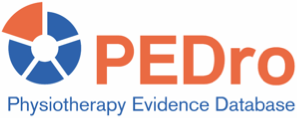Pneumoconiosis is a class of interstitial lung disease where inhalation of mineral dust (eg, silica) has caused interstitial fibrosis. It is commonly caused by occupational exposure. In 2018 pneumoconiosis accounted for over 80% of occupational diseases recorded in China. This systematic review aimed to estimate the effects of pulmonary rehabilitation compared to routine treatment on functional capacity and quality of life in people with pneumoconiosis.
Guided by a prospectively registered protocol, sensitive searches were performed in nine databases (including PubMed, Embase and Cochrane CENTRAL), three trial registries, and citation tracking of included trials and existing systematic reviews. To be included, trials needed to have compared pulmonary rehabilitation to routine treatment in people with pneumoconiosis. Pulmonary rehabilitation had to include exercise training, and could also include health education, nutritional intervention and psychosocial support. The primary outcomes were functional capacity (measured by the 6-minute walk test) and quality of life (measured by the St George’s Respiratory Questionnaire). Two reviewers independently selected trials, extracted data and evaluated trial quality. Disagreements were resolved by discussion or by a third reviewer. Trial quality was assessed using the Cochrane risk of bias tool. Certainty of the evidence was evaluated using the Grading of Recommendations Assessment, Development and Evaluation (GRADE) system. Meta-analysis was used to calculate the mean between-group difference and 95% confidence interval (CI). Two subgroup analyses were performed to evaluate the: (1) content of the intervention (exercise training combined with health education vs. exercise training combined with health education plus other interventions); and (2) duration of intervention (< 3 months vs. >= 3 months).
16 trials (1,307 participants) were included in the analyses. All but one trial were conducted in China. The duration of pulmonary rehabilitation ranged from 1.5 to 12 months, with 6 trials using a duration of < 3 months and 10 trials a duration of >= 3 months. The most common content of the pulmonary rehabilitation interventions evaluated were exercise training combined with health education and respiratory training (6 trials) and exercise training in combination with health education (5 trials).
Compared to routine treatment, pulmonary rehabilitation increased the distance walked in a 6-minute walk test by a mean of 69 m (95% CI 62 to 76; 12 trials; 1,049 participants; moderate certainty) and improved the St George’s Respiratory Questionnaire score by a mean of -10 points (-16 to -3; 4 trials; 540 participants; very low certainty). The subgroup analyses produced similar results for both the content and duration of the intervention. For the 6-minute walk test, exercise training combined with health education increased the distance by 64 m (53 to 75; 6 trials; 525 participants) while exercise training combined with health education plus other interventions increased by 74 m (64 to 83; 6 trials; 524 participants). Pulmonary rehabilitation of < 3 months duration increased walking distance by 71 m (58 to 85; 5 trials; 533 participants) compared to 67 m (58 to 77; 7 trials; 516 participants) for >= 3 months duration. For the St George’s Respiratory Questionnaire, exercise training combined with health education improved the total score by -10 points (-23 to 3; 2 trials; 300 participants) while exercise training combined with health education plus other interventions improved it by -9 points (-22 to 3; 2 trials; 240 participants). Pulmonary rehabilitation of < 3 months duration improved the St George’s Respiratory Questionnaire score by -4 points (-6 to -1; 2 trials; 360 participants) whereas the effect was -17 points (-21 to -12; 2 trials; 180 participants) for programs with >= 3 months duration. Adverse events were not documented by any of the included trials.
Pulmonary rehabilitation probably improves functional capacity and may improve quality of life in patients with pneumoconiosis.
Zhao H, et al. Pulmonary rehabilitation can improve the functional capacity and quality of life for pneumoconiosis patients: a systematic review and meta-analysis. BioMed Res Int 2020;(6174936):Epub



